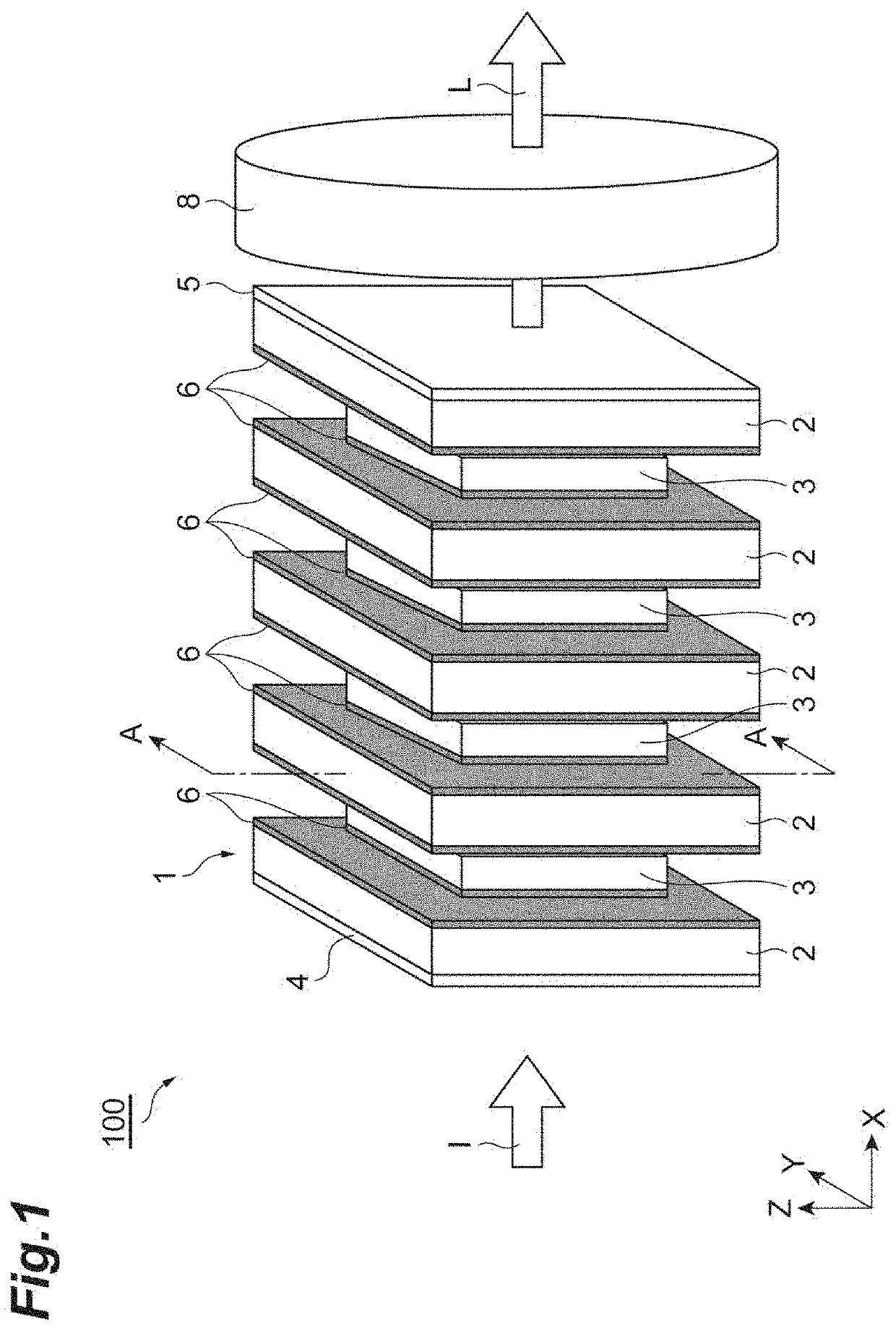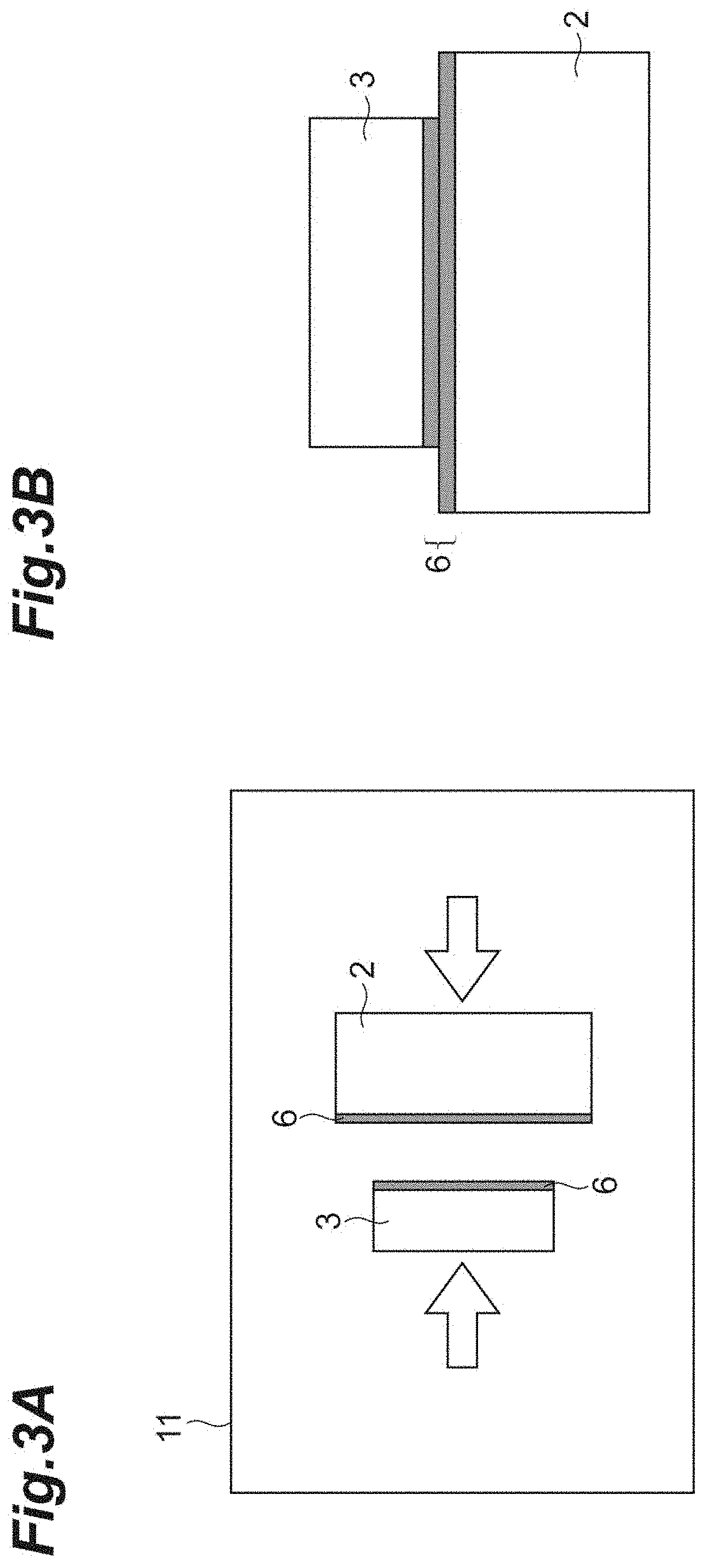Method for manufacturing optical element and optical element
a manufacturing method and technology of optical elements, applied in the direction of optical resonator shape and construction, other domestic articles, coatings, etc., can solve the problems of difficult bonding of elements, increased existence of intermediate layers, so as to reduce the loss of laser light, small and simple configuration
- Summary
- Abstract
- Description
- Claims
- Application Information
AI Technical Summary
Benefits of technology
Problems solved by technology
Method used
Image
Examples
example embodiments
Eighth Group of Example Embodiments
[0142]Next, an eighth group of example embodiments will be described. In the description of the eighth group of example embodiments, matters different from those in the first group of example embodiments will be described.
[0143]FIG. 16A to 16D is a longitudinal sectional view showing a nonlinear wavelength conversion element 801 according to the eighth group of example embodiments. The nonlinear wavelength conversion element 801 is an optical element having a periodic structure for performing quasi-phase matching (QPM). When the nonlinear wavelength conversion element 801 is manufactured, a plurality of quartz plates 802 are prepared, and the plurality of quartz plates 802 are bonded so as to overlap one another via an intermediate layer 806 as shown in FIG. 16A. Among the plurality of quartz plates 802, a pair of adjacent quartz plates 802 is disposed so as to have different polarities of target generated electric fields. Quartz has no spontaneous...
configuration example 1
[0157]An optical element including a laser medium, a Q switch element laminated on the laser medium, and an intermediate layer therebetween.
configuration example 2
[0158]An optical element including a transparent heat sink, a laser medium laminated on the heat sink, and an intermediate layer located therebetween.
PUM
| Property | Measurement | Unit |
|---|---|---|
| wavelength | aaaaa | aaaaa |
| wavelength | aaaaa | aaaaa |
| thickness | aaaaa | aaaaa |
Abstract
Description
Claims
Application Information
 Login to View More
Login to View More - R&D
- Intellectual Property
- Life Sciences
- Materials
- Tech Scout
- Unparalleled Data Quality
- Higher Quality Content
- 60% Fewer Hallucinations
Browse by: Latest US Patents, China's latest patents, Technical Efficacy Thesaurus, Application Domain, Technology Topic, Popular Technical Reports.
© 2025 PatSnap. All rights reserved.Legal|Privacy policy|Modern Slavery Act Transparency Statement|Sitemap|About US| Contact US: help@patsnap.com



